Demand for electric power, thanks to the recession, has been almost flat for the last seven years and government forecasts for the next few years are not encouraging. Some of that lack of growth is attributed to improved efficiency. Not long ago, for instance, we replaced incandescent light bulbs around our house with CFLs and then again more recently with more efficient LEDs. It is quite likely that other homes are doing the same. What’s more, every air-conditioner upgrade is usually to a more efficient unit.
What’s surprising is that even with the eminent retirement of several coal-fired power plants, no one predicts a power shortage. Natural gas-fueled plants and wind power will fill the demand. But is there a way to boost demand for power?
The big way, as I see it, other than grow lights for illegal substances, would be with a growing fleet of electric cars, buses, and motorcycles. So just for kicks, we’ve compiled a list of electric vehicles that could create demand for more power and, in particular, more wind-generated power. Besides, what could be a more sublime idea: driving around on wind-generated power. No demand for fossil fuels, no pollution, cleaner air for everyone, and a good portion of it is grown in North America. Here’s what we found:
E-buses
Having ridden buses to school and work for a couple decades, it’s safe to say there is a lot that can be done to improve the image of public transportation. For instance, buses leak when it rains, can be cold in the winter, and hot in the summer. From experience, their air-conditioning equipment is less reliable than the AC on most cars. One summer bus ride home was on a vehicle with a busted air conditioner and stuck-shut windows. With people standing in the aisle, that ride was a 45-minute sauna. Just improve those simple things and any city would have happier riders. But how could a city make an environmental statement with public transportation? An electric bus.
China-based BYD (Build Your Dream) has been making the most noise here. The company showed off two of its buses at a recent U.S. bus expo.
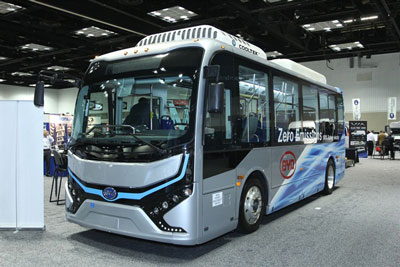
How quaint that a 25-passenger bus would come from China, a country with many new, sprawling and packed cities. But, it is electric.
The company says its smaller BYD e-bus features many safety measures such as, vehicle-design protection (probably functioning bumpers), maintenance protection, short-circuit protection, collision protection, water-seepage protection, and power-leakage protection. The battery packages are said to meet high safety standards and come with protection against various magnetic fields that are in line with international standards.
BYD’s e-bus uses the company developed iron-phosphate battery that provides a range of up to 250 km on a full charge. The battery package for BYD e-bus is rated for 200 Ah and the total power capacity is 324 kWh with more than 4,000 recharging cycles in a life span. I liked this stat best: 1.92 kWh/mi, or about $0.21/mi. A diesel-powered 9-mpg bus would cost close to $0.30/mi to operate. The company says this small version sports a:
- One-step low pass aisle
- Environmental-friendliness with low-carbon emissions, and high efficiency
- Globally leading in-wheel drive technology (sorry, no details)
- Intelligent key system for a one-button start
- Electronically controlled air-suspension system for vehicle height adjustments and side kneeling
- Personalized chairs for the handicapped
How quaint that a 25-passenger bus comes from China, a country with many new, sprawling and packed cities. For a larger version of the vehicle, the company offers the 120-passenger unit with 170-mi range. Now that’s a bus.
A few specs for the BYD 40 ft and 60 ft E buses
| Characteristic | 40 ft e-bus | 60 ft e-bus |
| Curb weight | 29,300 lb | 47,400 lb |
| Gross weight | 41,887 lb | 64,600 lb |
| Seats | 25+ 1 | Up to 60 |
| Top speed | 43 mph | 60 mph |
| Max gradeability | 15% | 18.5% |
| Min ground clearance | 5.5 in. | 10.93 in. |
| Range | About 150 mi | 170 mi |
| Turn radius | 39.3 ft | 38 ft |
| Motor | Ac synchronous | Ac synchronous |
| Max power | 241 hp (2 x 90 kW motors) |
482 hp (2 x 180 kW motors) |
| Rated power | 201 hp | ~400 hp |
| Max torque | 516 ft-lb | 2,212 ft-lb |
| Battery | Iron phosphate | Iron phosphate |
| Battery capacity | 324 kWh or 600 Ah | 547.5 kWh, 750 Ah |
| Charge time | 5h | 2 to 3 h |
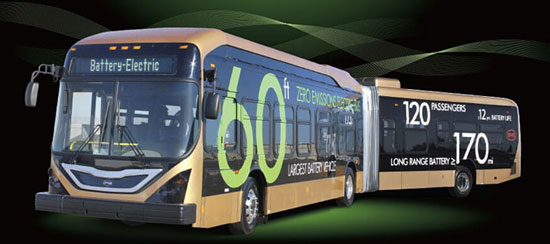
Could an electric business be a tourist attraction? Who knows? How about this: a fleet of e-busses, when not in service, could also serve as power storage – peak shaving or frequency stability – for the local utility. The utility would then compensate the transit system with lower power rates. Hmm?
E cars
You’ve read about the Tesla and Nissan Leaf, now how about the Chevy Bolt? It is one of the better-looking EVs and with 200-mi range, says proud parent General Motors. The company introduced the $30,000, all-electric concept car at the 2015 Detroit Auto Show. Having sold its hybrid Volt since 2010, GM’s new concept car is a competitor to Tesla’s plan to launch a lower cost, mainstream electric car, the Model 3.
Here’s some of what Chevy’s press release had to say about the design: It’s a statement on its commitment to electrification. The Bolt EV concept is a vision for an affordable, long-range all-electric vehicle designed to offer more than 200 mi of range and start around $30,000.
Drivers will be able to select operating modes for preferred driving styles such as daily commuting versus spirited weekend cruising. The modes adjust accelerator pedal mapping, vehicle ride height, and suspension tuning. The Bolt EV concept will also support fast dc charging, although it did not define “fast.”
Lightweight materials, including aluminum, magnesium, carbon fiber and even woven mesh, complement the design, while driving down the curb weight to help maximize range. Aero-optimizing features such as vented rear fenders also contribute to its range.
High-intensity, efficient light-emitting diode (LED) headlamp, and tail lamp elements are housed behind jewel-like faceted lenses in which translucent elements illuminate evenly to create a signature lighting effect. The concept’s technological intuitiveness can be accessed by a smartphone with the concept Bolt EV Connect app that lets the phone function as the key fob. A color 10-in.-diagonal capacitive touch screen, with interface features, to project the application and other smartphone data onto the screen.
Here’s a wow feature: The company says it has incorporated the concept of automatic park-and-retrieval technology, which lets the driver exit the car and tell the Bolt EV to park itself. When errands are completed, the car can be summoned to the owner’s location. Clever, but I think you should walk to the car. You need the exercise.
E-locomotives
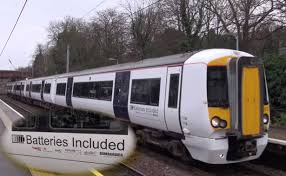
The modified Class 379 Electrostar battery-powered train was scheduled for a five-week trial run. No word on the trial results yet.
Sometime in 2014, passengers on the U.K. rail network saw the first battery-powered locomotive on the tracks in more than half a century. The modified Class 379 Electrostar battery-powered train, was scheduled for a five-week trial run. Successful trials were completed on test tracks the previous year.
The U.K.’s Guardian reports that if the trial proved successful, the company piloting the trains, Network Rail, promised that a fleet of battery-powered locomotives could provide a potentially cost-effective and zero-emission alternative for the commonly used diesel engines. The company has a goal to reduce costs by 20% over the next five years, improve sustainability, and reduce its environmental impact. The UK has a large number of on and off-shore wind farms, so the reduced environmental-impact goal is within reach.
On this side of the pond and a few years ago, Norfolk Southern took the wraps off the NS 999, a prototype battery-powered, 1,500-horsepower, plug-in locomotive. Equipped with a string of 1,080 lead-acid batteries (lead-acid?), the 12 V units partially recharge when applying the brakes. The electric loco ensures zero-exhaust emissions because there is no diesel engine. NS says it can operate for three shifts on single charge. An elaborate battery-management system provides safety and maximum battery life.
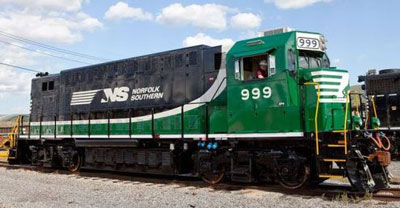
The NS 999, a switcher, will work in rail yards, assembling cars into longer trains.
The $1.3 million switcher, developed jointly by Norfolk Southern, the DOE, the Federal Railroad Administration, and Penn State, aims to bring down the overall carbon footprints of the transportation sector in the Norfolk region.
Initial trials were conducted at NS’ Rose Yard in Altoona, Pa. With only 80% of its batteries connected, NS 999 operated a full switcher shift, at one point pulling 2,200 tons of rail cars on an uphill track – without using a sanding system, occasionally used to provide more traction. After the shift, the four-axle switcher had enough juice in its 12V batteries to run two more eight-hour shifts.
“It did all the work a diesel locomotive would do,” said Gibson Barbee in a press release. He’s manager of continuous improvement with NS’ research and tests group, which led the NS 999 project. The locomotive won over Jim Blodis, a road foreman of engines who supervised the yard trials. “I was pessimistic about the horsepower we could achieve with just battery power, but it made me a believer.”
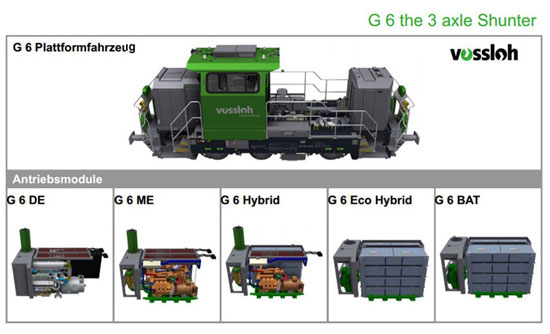
Germany’s Vossloh Locomotive indicates that its G6 can be driven by one of five different power packs and at least one of them all electric. The three-axel shunt locomotive is intended for pushing cars around the rail yard. In the U.S. it would be a switcher, as is the NS 999.
E-scooters
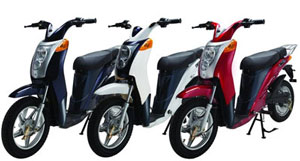
S750 is the first e-bike designed by a Japanese company, an odd distinction at best. The company says it kept the design stylish but also strived to achieve a reasonable price ($1,000) and expand the market. Max speed is pleasant 24.8 mph with a range of about 31 mi.
Japan-based Terra Motors recently unveiled its S750, the first e-bike from Japan, they say. The manufacturer of electric two and three-wheelers,
Terra Motors Corporation unveiled S750 in March this year. The company says it is the succeeding model of A4000i that it expects to expand the e-scooter and e-bike market worldwide.
S750 meets high specifications despite the fact it is an electronic bike. Max speed is almost 25 mph, it runs 31 mi on a full charge and can go further when you pedal, a method for extending its range. The U.S. might be a market because it comes in colors: red, white, and blue.
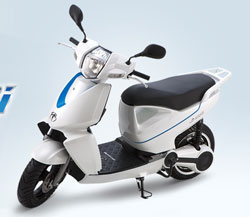
Another first is the A4000i, the world’s first e-scooter with smartphone connection and Terra’s flagship model in 2014. The phone functions as a dashboard, not a way to text and ride.
The first availability of S750 was in Vietnam. The company plans to open 50 showrooms there by the end of 2015 and is planning to ink distributor agreements in 10 to 15 more countries worldwide in 2015. For a list of more electric bikes, check out Welcome to Electric-Bikes.com, and in particular the Twike, which for some bizarre reason, Executive Editor Michelle Froese finds interesting. It’s a three-wheeler with a cover.
A few specs for the A750
| Price | ~$2,000, but location specific |
| Weight | 59 kg |
| Est range | 50 km, at 25 km/h |
| Max speed | 40 km/h |
| Battery specs | 48V, 12 Ah |
| Charge time | About 5 h |
| Power | 250W |
| Wheel base | 1,200 mm |
E-motorcycles
If an electric bus is unsexy, then the newest concept Harley is its polar opposite. Harley Davidson has teased potential buyers with a prototype on a dynamometer and it sounds right off the Star Wars set. Give a listen here. It’s fusion drive, right? Sadly, the LiveWire is not yet available.
What is available are several models from Zero Motorcycles. One with a price tag of about $16,000, the Zero SR, has a range of about 185 miles in the city or 94 miles on the highway, and it operates in three modes: sport, power, and range. There are no gears to shift through, so the SR rides as easily as a moped, albeit one that’s frighteningly quick, says the company. Acceleration goes from zero to 60 mph in under four seconds, and hits a top speed of over 100 mph. In addition to foot and hand brakes, the SR slows quickly when the throttle is released.
The company adds that its entire model line comes with new standard equipment, including Showa suspensions, Bosch anti-lock brake systems, and Pirelli tires. To increase range, Zero introduced new battery cells with 10% greater capacity on the Zero S, SR, and DS models. When combined with the Power Tank accessory this yields an industry-leading range, they say, of up to 185 mi in the city, 94 mi on the highway at 70 mph, or 115 mi at 55 mph. Zero motorcycles are built in California, and Navigant Research forecasts that global sales of electric motorcycles are expected to grow from 1.2 million this year to 1.4 million annually in 2023.
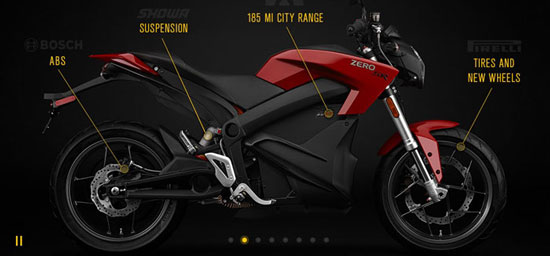
The company says its SR model is for riders who want to go faster and accelerate harder. It features a 660-Amp motor controller for 25% more power and 56% more torque than previous models. To accommodate the increased power, the Zero SR motor uses high-temperature magnets for better performance during extended durations at higher speeds.
All the electric vehicles in this collection have some appeal to me, the Zero SR the most down to the S750 Scooter. While the ranges are sufficient though modest, they will lengthen with improved battery chemistry.
As someone who drives to work, I recognize that fracking and other factors have made gasoline a less expensive product this year. For that, many are grateful but it lessens the appeal for transport powered by other means.
As a wind advocate, I have often prayed that the price of natural gas would rise so that wind-generated power could occupy the spot as lowest cost power producer and encourage its growth. But as one colleague cautioned, be careful what you wish for.
If utilities are looking for more customers, I would think a little encouragement from them to the EV industry would be in order. For instance, a fleet of just 10, 120-passenger BYD busses would have a combined battery capacity of 5.47 MWh, a figure that exceeds that of many power-storage facilities built by utilities for peak shaving and frequency stability. Regional transit authorities and their utilities could become good friends.
Filed Under: Featured, News

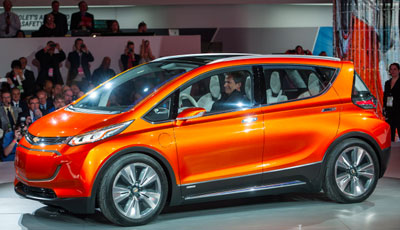
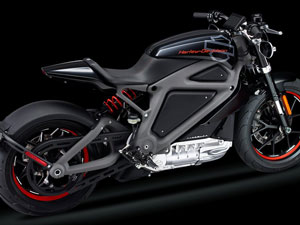




Introduce a kind of phone app, which can make the wind farm easy to manage. If you are interested in this kind of App, welcome to reach us ! Video Link:http://v.qq.com/page/l/6/v/l016051qk6v.html